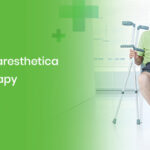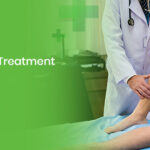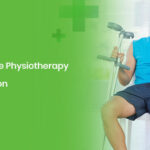What is Posterolateral Corner Injury?
As the name suggests, the area of the Posterolateral corner (PLC) extends from the bottom of the femur (thigh bone) to the upper ends of the Tibia and the Fibula (lower leg bones) on the outer and posterior (behind) aspect of the knee.
The Posterolateral corner (PLC) comprises static structures which include the lateral collateral ligament (LCL), the popliteofibular ligament, and the posterolateral capsule. Together these structures prevent varus stress at the knee and internal rotation of the tibia on the femur. The dynamic stabilizers include the Popliteus muscle, Iliotibial band, bicep femoris, and the lateral gastrocnemius tendon. Dynamic structures reinforce the static ones during movement.
Injuries to PCL are more commonly seen in athletic traumas, road traffic accidents, and falls. PLC injuries more often occur in combination with other cruciate ligament injuries.
The common peroneal nerve (a nerve that supplies the lower leg and toes) wraps around the neck of the fibula and can also be injured if there is an injury to the PLC of the knee.
Causes of Posterolateral Corner Injury
A force that produces a combination of hyperextension and varus stress to knee may result to posterolateral corner injury. Another example would be a posteromedial blow to the knee while the knee is extended. These can be seen is road traffic accidents or while tackle in contact sports.
Symptoms:
PCL Injuries may or may not occur in conjunction with other knee injuries.
Common symptoms include –
Pain and swelling on the posterolateral aspect of the knee.
Pain aggravates with weight-bearing activities.
Feeling of weakness or ‘giving way’.
If the injury is associated with peroneal nerve involvement, the patient may also experience pins and needles and numbness in the lower leg and foot along with weakness of foot and ankle muscles.
Diagnosis:
On examination, the physiotherapist will look for signs of a PLC injury. A series of knee ligament stability tests can be utilized to confirm the diagnosis.
An MRI may be required to confirm the diagnosis and look for severity and to rule out any associated injury.
Treatment Of Posterolateral corner Injury
Most patients with a mild posterolateral injury start to recover within a few weeks of the injury with the appropriate rehabilitation.
Your Physiotherapy treatment will aim to:
- Reduce pain and inflammation
- Normalize joint range of motion
- Strengthen the muscles of the lower limb
- Improve patellofemoral (knee cap) alignment
- Normalize muscle lengths
- Improve proprioception and balance
- Improve functionality with walking, running, squatting, hopping, and landing.
- Minimize chances of re-injury.
PAIN-FREE PHYSIOTHERAPY CLINIC advises that one should discuss the knee injury with a knee injury specialist such as a Physiotherapist or knee surgeon.
- Surgery
Normally grade I PLC injuries resolve completely with conservative treatment. Depending on the severity and involvement of other structures, surgery may be required.
As will all cases of knee surgery risk may include pain, infection, instability, stiffness, and difficulty returning to the previous level of activity.
- Post-Surgical Rehabilitation
For a quick and successful recovery, post-operative knee rehabilitation is one of the most important aspects which is often neglected after knee surgery.
The rehabilitation following knee surgery focuses on restoring full knee motion, strength, power, endurance, balance and proprioception, and agility training that is individualized to specific sporting or functional needs.
Prevention:
The things that should be done to reduce the risk of sustaining a PLC injury includes-
- Biomechanical correction of the knee and ankle joint.
- Adequate warm-up and stretching program before and after exercise.
- muscle imbalance correction in the lower limb
- Adequate footwear during exercise
- Avoid sudden increases in training frequency and/or intensity
- Strengthening lower limb muscles.
Return to Sports with a Posterolateral Corner Injury
With a suitable rehabilitation regime, the patient can be successfully rehabilitated back to normal life or sporting activity.





